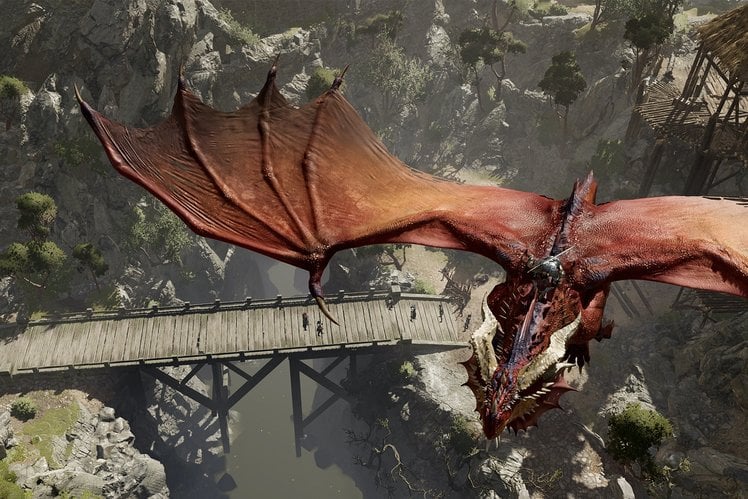
Larian had been cranking out solid games in the Divinity series for good few years before its reputation skyrocketed with the release of Divinity 2: Original Sin – it struck gold with its combination of role-playing fun and devilishly organic combat.
Now the developer has been given the keys to the castle so pined-after by developers around the world – an official Dungeons and Dragons license and the long-awaited third entry in the Baldur’s Gate franchise. Each bringing enormous new pressure.
But from the early access build of Baldur’s Gate 3 that we’ve been playing, it’s looking like something special once again.
A new, old start
The first two Baldur’s Gate games are straightforwardly seminal in the canon of interactive roleplaying; enormous adventures that were different for each player that played them through, with a large cast of memorable characters and storylines to sink into.
Baldur’s Gate 2 might have come out all of 20 years ago, but gamers have been awaiting a third entry that whole time since, in hope rather than expectation. Giving the rights to Larian, after the screaming success of Divinity 2, was a decision that seemed so sensible that it was almost to good to be true.
The world of Dungeons and Dragons, the Forbidden Realms in which Baldur’s Gate is in fact just one of many major cities, is clearly one that Larian has been able to slip into pretty seamlessly. Any developer of top-down role-playing games will have done its time in D&D, after all.
Story-wise, things get off to a lively start with an absolutely bombastic opening cinematic that sets the scene aboard the tentacled ship of a Mindflayer, an unambiguosly evil squid-face that’s infected the player character with a little brain tadpole of their own.
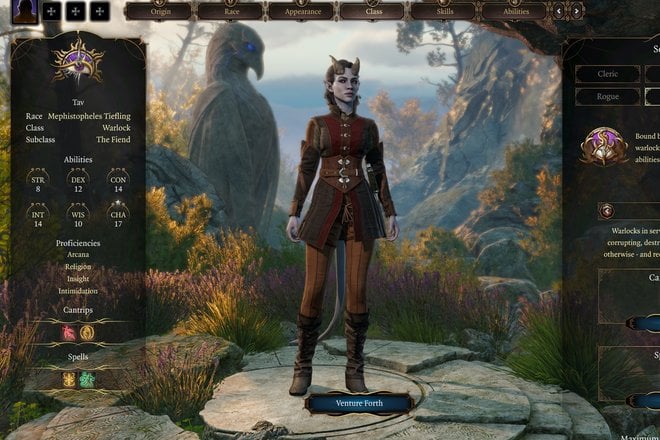
After creating a character of your own, replete with multiple races to pick from and a range of delightfully modeled faces to add to them, you’ll escape the doomed ship in a frightful crash before setting out to get said tadpole out of your cranium before you’re turned into a mindless zombie.
It doesn’t take long to assemble a cast of companions whose aims align with your own, and you’ll soon be off exploring a large coastal region in the hopes of discovering how to help yourself and, down the line, the world, by hindering the Mindflayer’s machinations.
In this early access build all of Act 1 is playable, with two more to come over the next year or so, meaning there’s going to be an absolute wealth of content to get through eventually.
Dividing your time
Much like in Divinity 2, your time is spent in a few primary ways in Baldur’s Gate 3 – exploring, talking and fighting. You’ll walk around the large areas figuring out what lies where and who you might want to talk to.
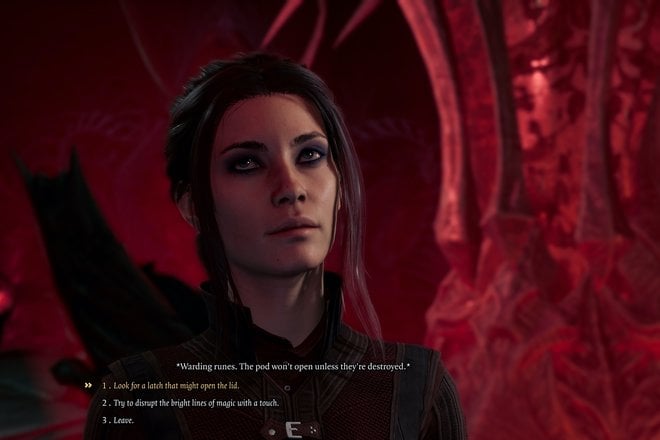
You’ll engage in dialogue with those characters, receive quests and requests from them, and find out more about how you can get closer to de-tadpoling yourself, and, of course, you’ll periodically get into scraps and fights. The conversations are as good as Larian’s best work – scripted evocatively and universally voice acted to a really high standard. Being rid of text-based mute conversations, even from the most minor side-characters, makes for a real feeling of quality.
These battles play out in turnbased style, using D&D’s initiative system to get a turn order and letting you move your party around and attack enemies in turn. There’s a good amount of synergy to explore between abilities and elements, although it’s a little less unhinged than Divinity 2’s elemental combat.
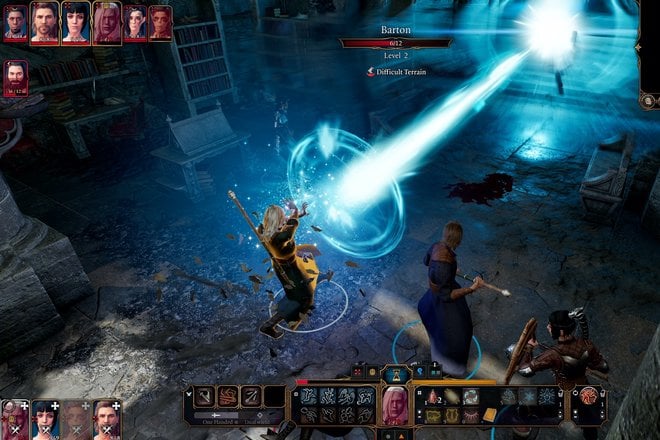
Still, it’s engaging stuff that gets more and more challenging as you progress, and the satisfaction of pulling off an unlikely victory is well worth the time it takes to do so. It might take a little getting used to how brutal D&D’s dice-based combat can be if you have a run of bad luck, but once you’re in the swing of things it’s pretty straightforward.
The levels you’ll be fighting in, meanwhile, are Larian’s finest to date on the visual side, with gorgeous colour palettes and background details selling the reality of the situation beautifully. We’re playing on the PC from our mid-range build, and its XFX AMD Radeon RX 5700 XT GPU makes the most of Ultra settings to really maximise the impact of that scenery, with details that you’ll notice constantly in the background.
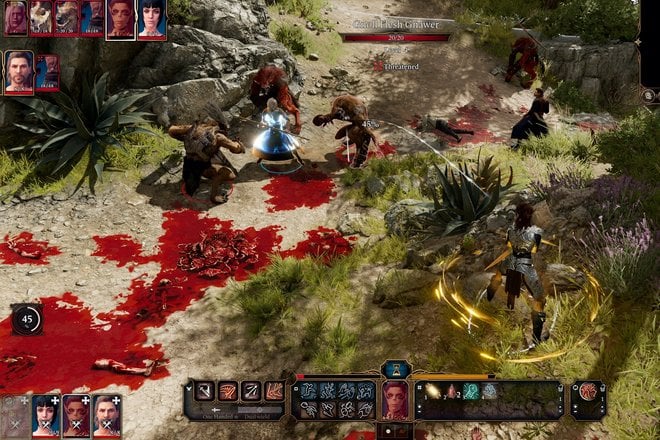
Cranking down to lower settings still leaves you with a pretty game, though, if a slightly less sharp one. Character models are similarly delightful, too, with expressive and empathetic faces and detailed, grounded armours and clothing textures. The animation of those models can occasionally be a little janky, though, especially in dialogue, and that’s one area we imagine will receive some touching up as the early access build develops.
Bug squashing
It’s worth zooming in on that side of things, though – Larian is doing early access in the true spirit of the system, here. This really is an in-progress build of the game, with hotfixes coming thick and fast to tie up bugs and improve elements, and that does mean a necessary dose of breakages.
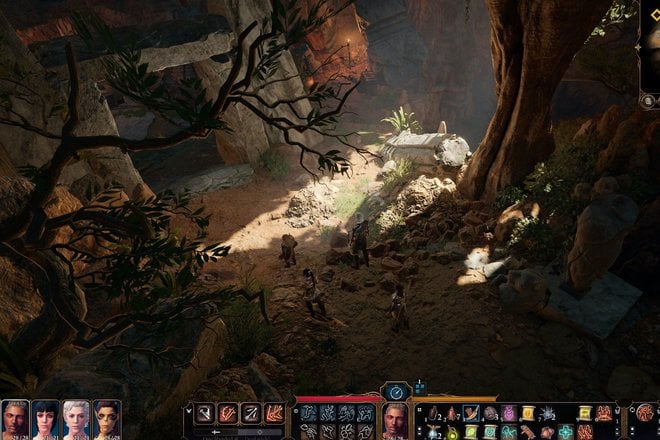
You’ll see slightly bugged animations, or odd visual glitches like models not loading into cutscenes, and sometimes movement or even entire questlines will simply break either a little or completely. This means frequent saving is your best friend, and running multiple saves in case of progress loss is sensible too.
We don’t mention this as a criticism, but more as a warning. Larian is being nice and upfront about this side of things, so we don’t think it should surprise anyone, but nonetheless if you want a fully polished and bug-free experience, you should follow Larian’s advice and wait for the full 1.0 release, which is likely to arrive in late 2021 as things stand.
